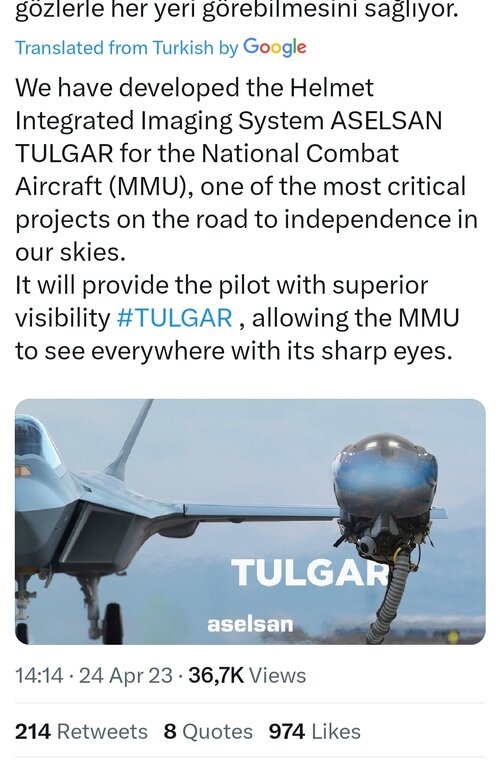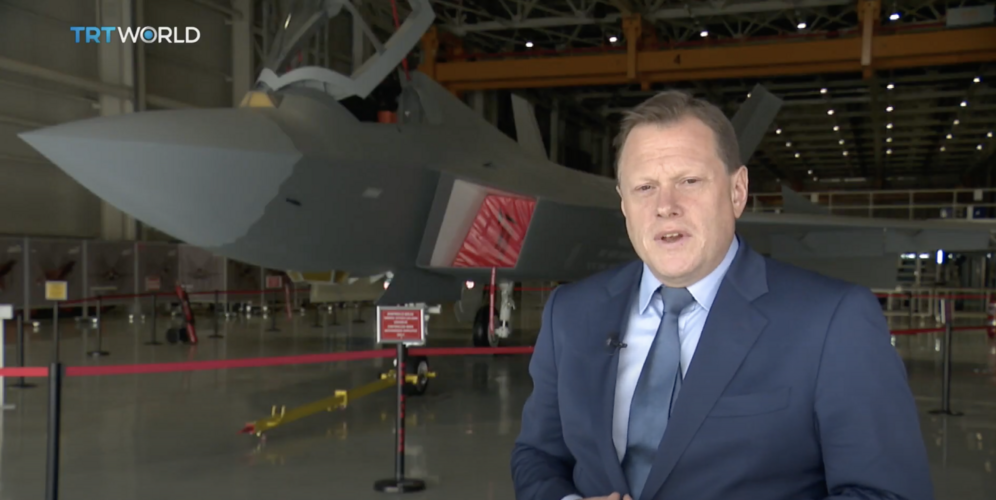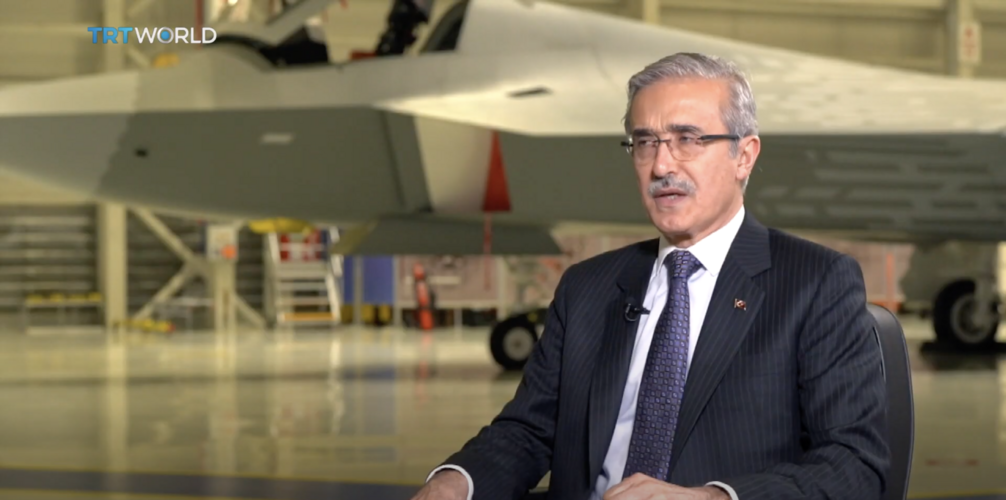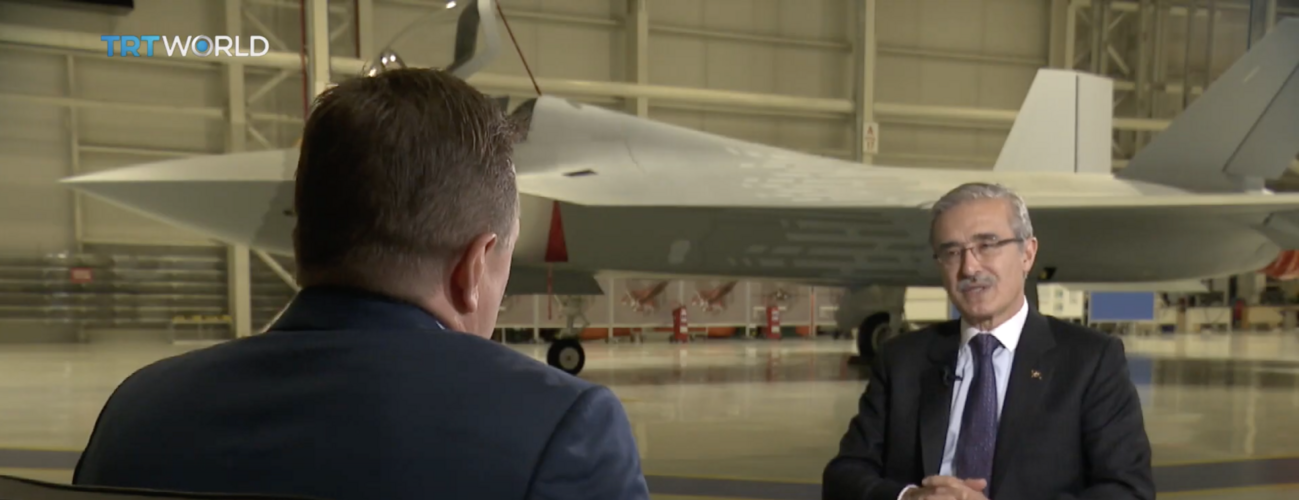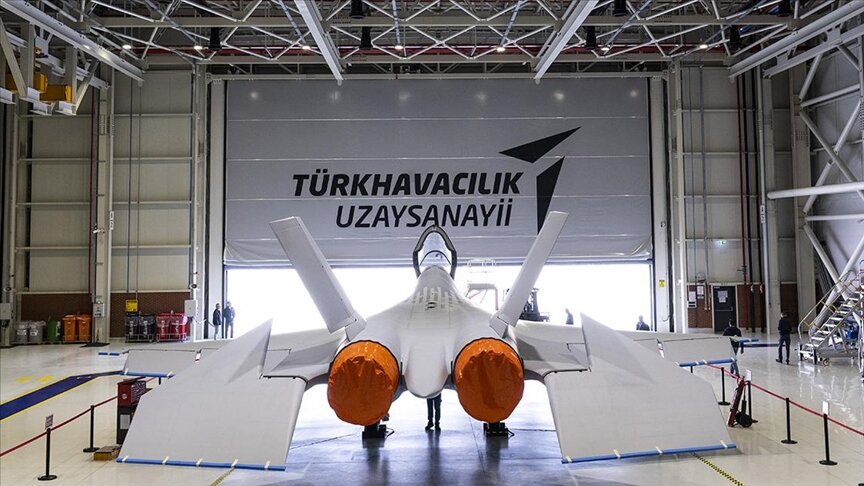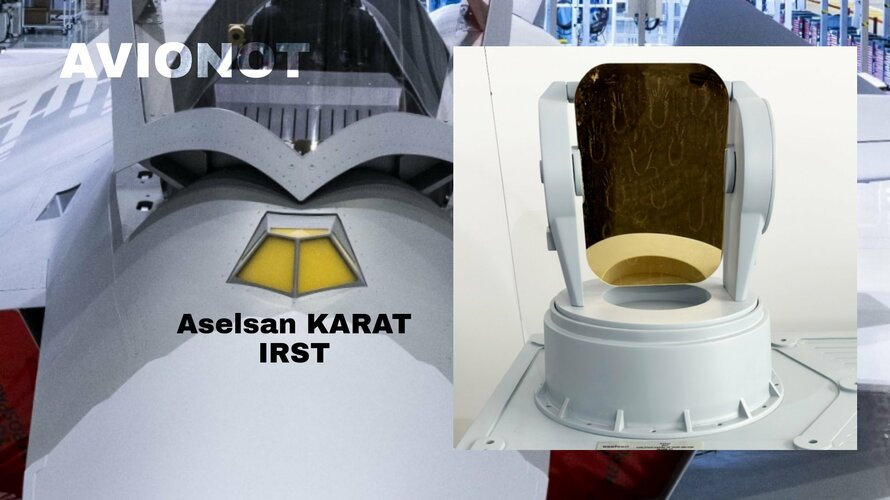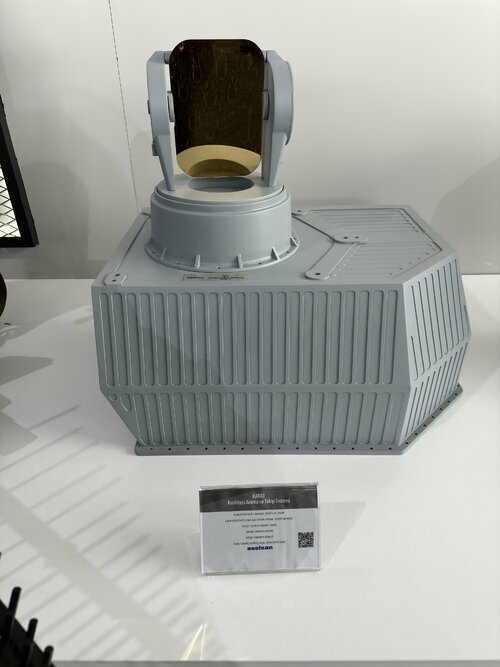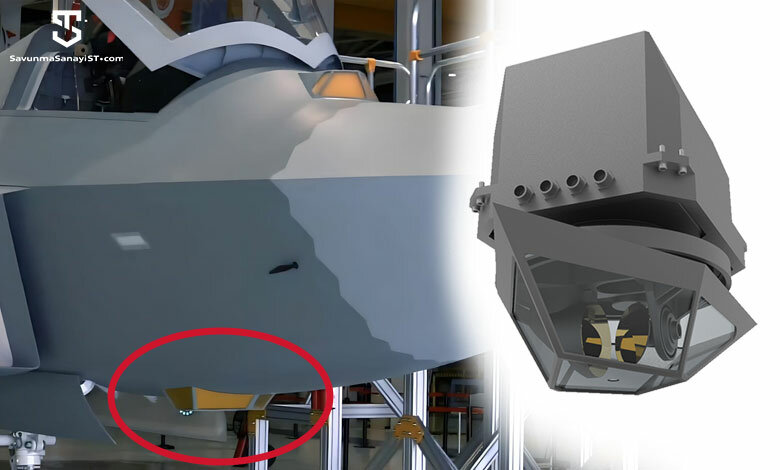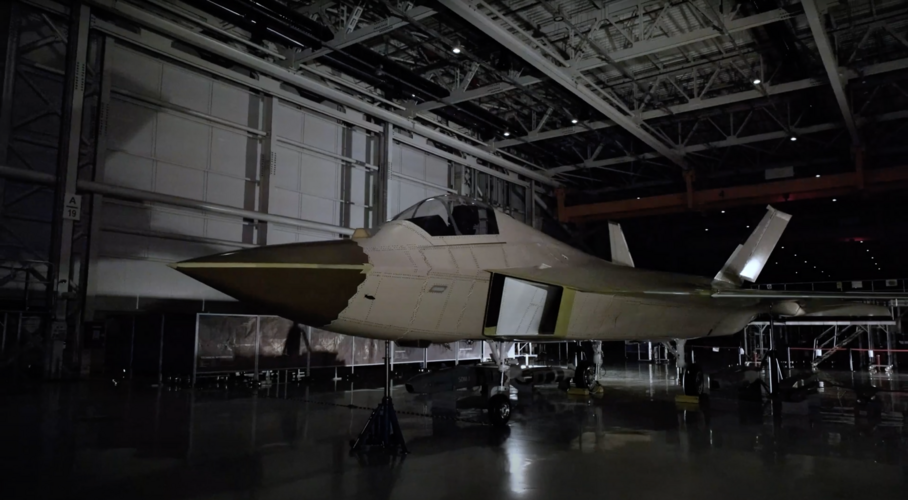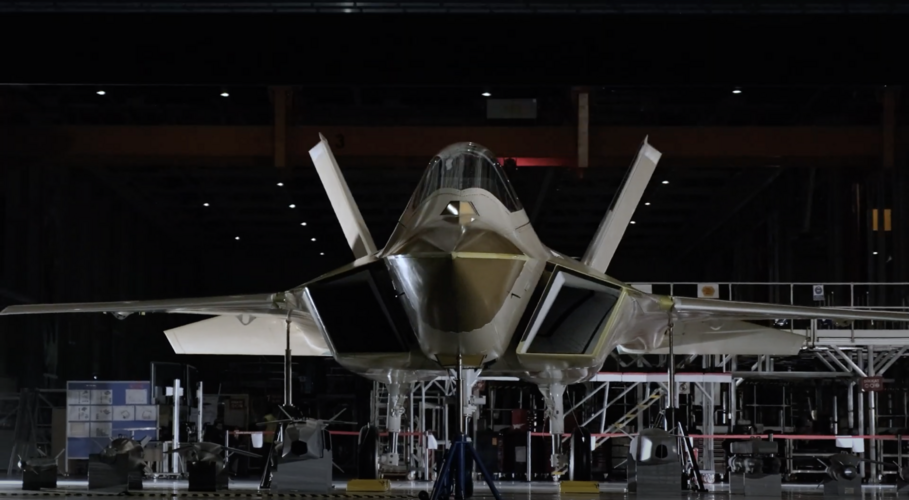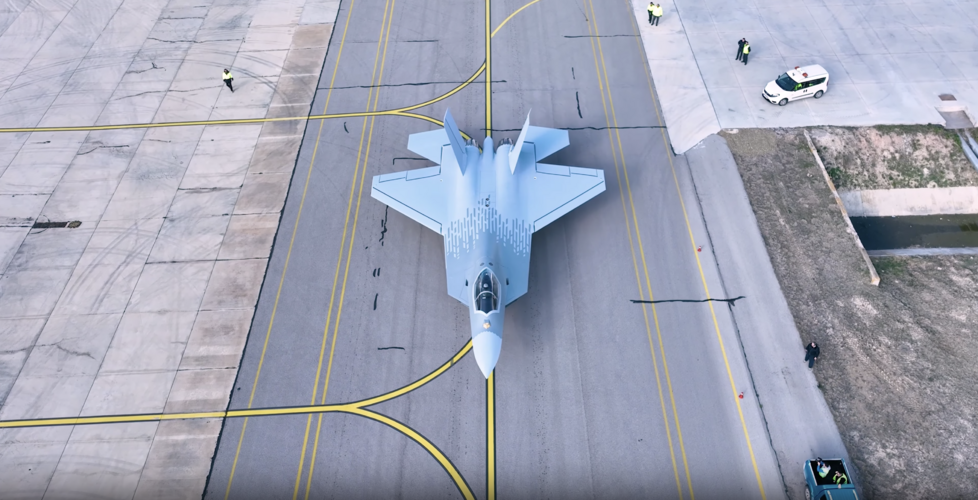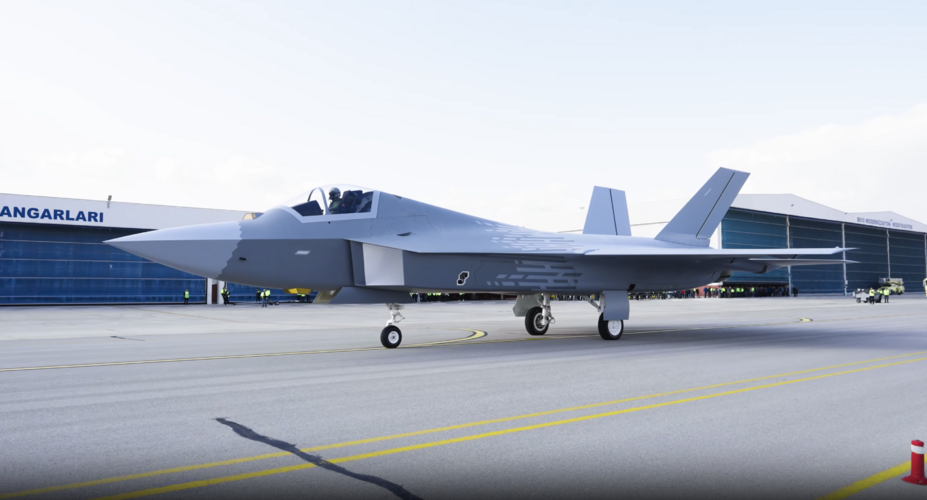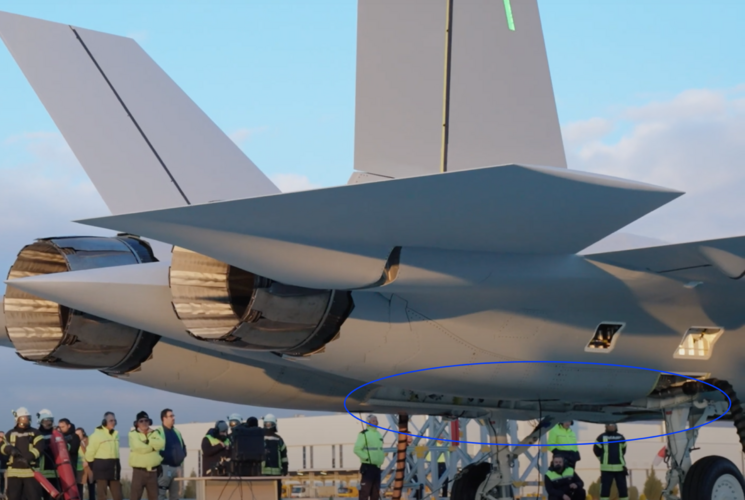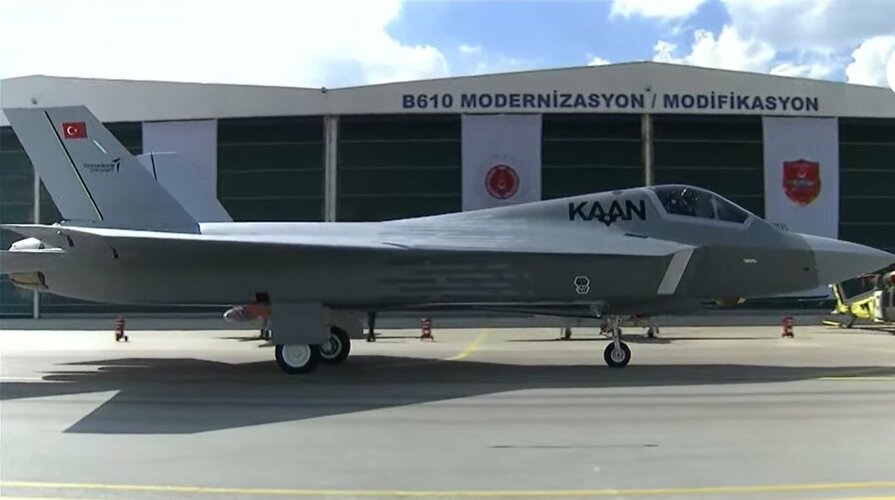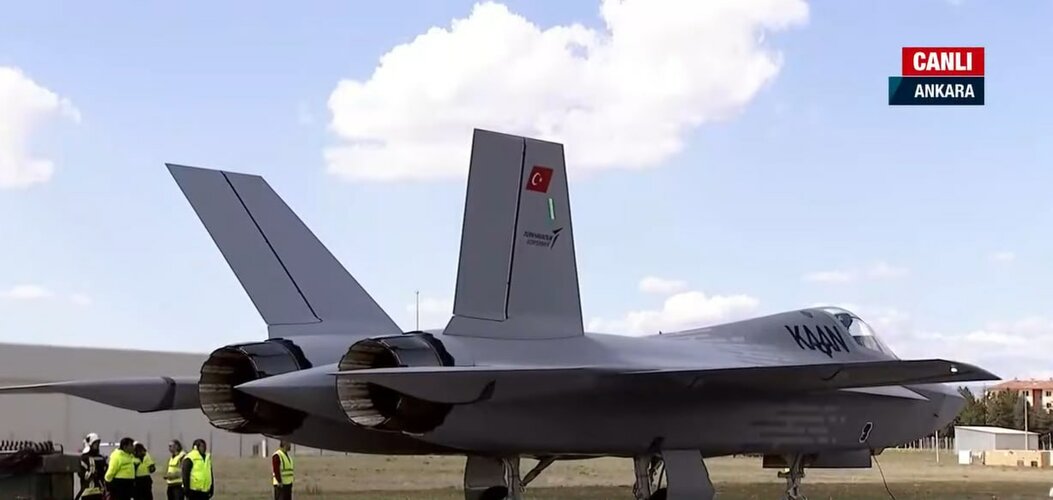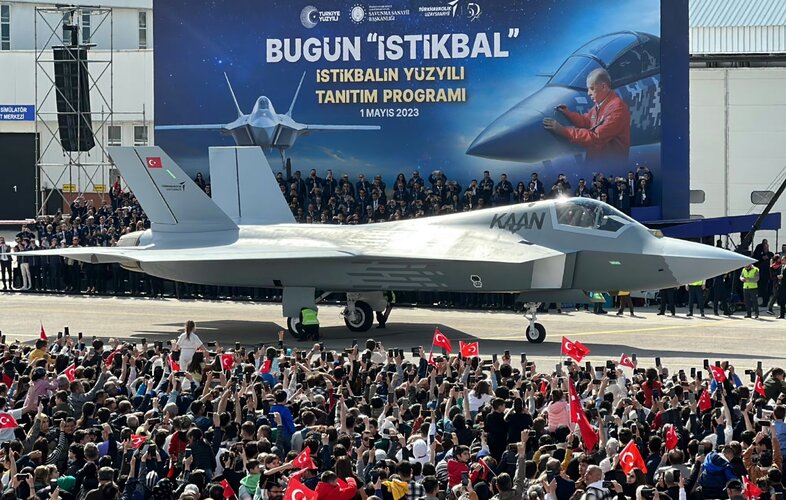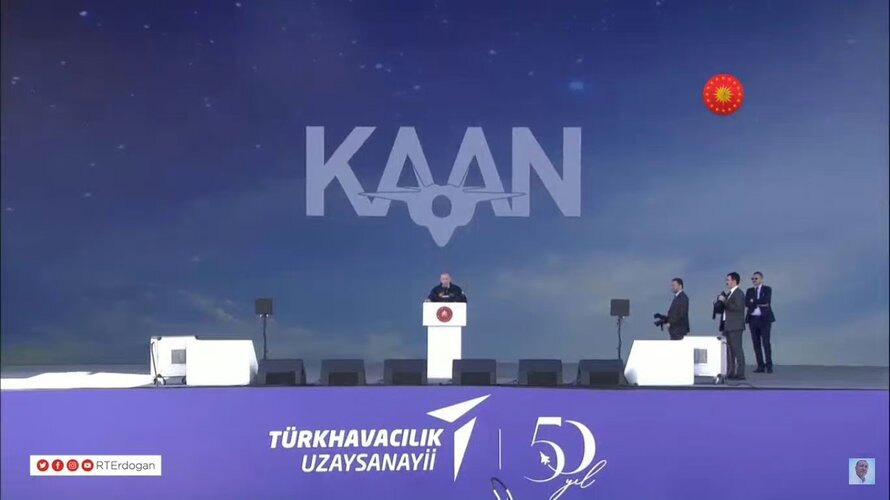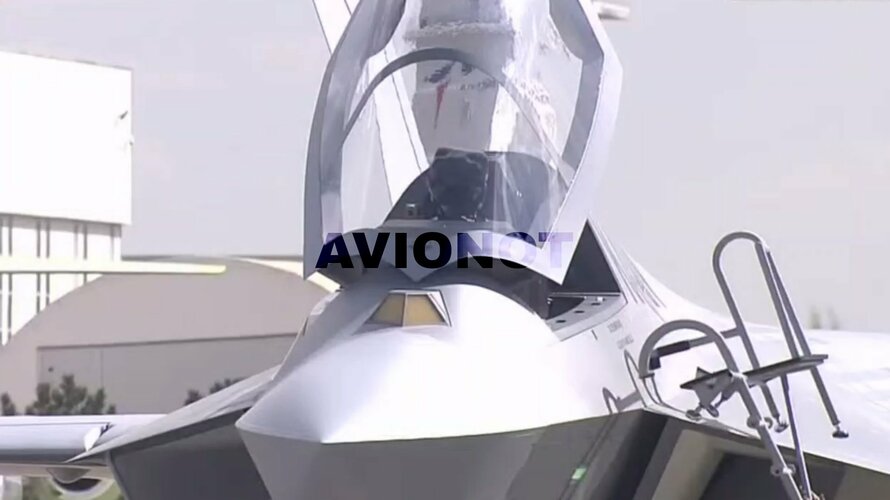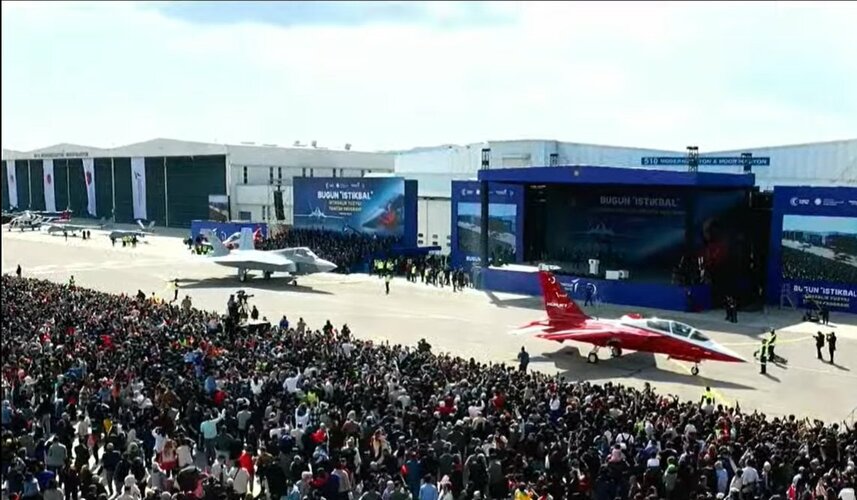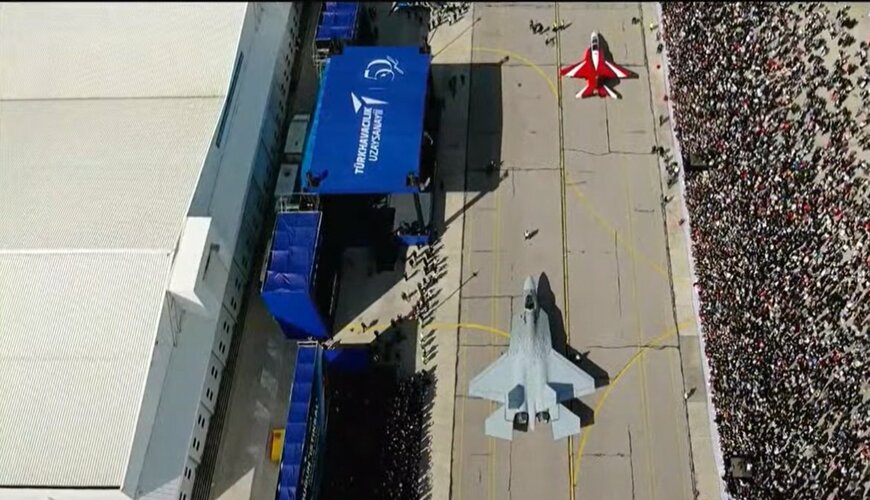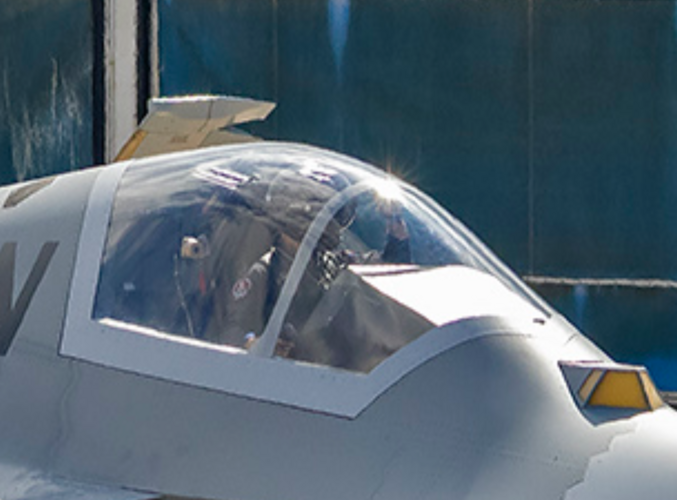You are using an out of date browser. It may not display this or other websites correctly.
You should upgrade or use an alternative browser.
You should upgrade or use an alternative browser.
TAI TF-X / Milli Muharip Uçak MMU Kaan
- Thread starter ocay
- Start date
snne
ACCESS: Top Secret
- Joined
- 3 July 2022
- Messages
- 581
- Reaction score
- 1,555
- Joined
- 29 November 2010
- Messages
- 1,703
- Reaction score
- 3,214
it would be helpful if you could translate that?
snne
ACCESS: Top Secret
- Joined
- 3 July 2022
- Messages
- 581
- Reaction score
- 1,555
Combat-Master
ACCESS: Top Secret
- Joined
- 15 July 2020
- Messages
- 1,104
- Reaction score
- 2,860
SOM-J cruise missile developed specifically for internal weapons bay

Combat-Master
ACCESS: Top Secret
- Joined
- 15 July 2020
- Messages
- 1,104
- Reaction score
- 2,860
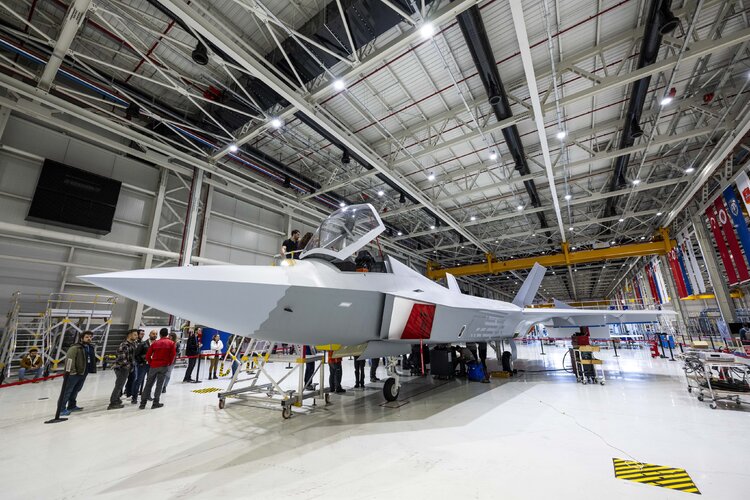
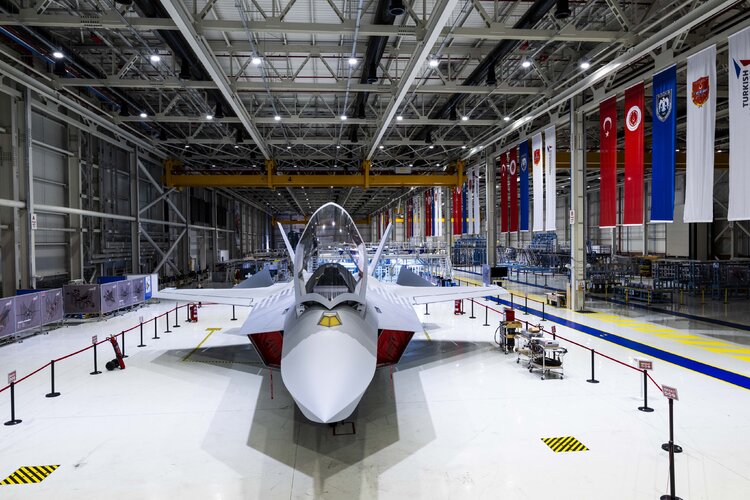
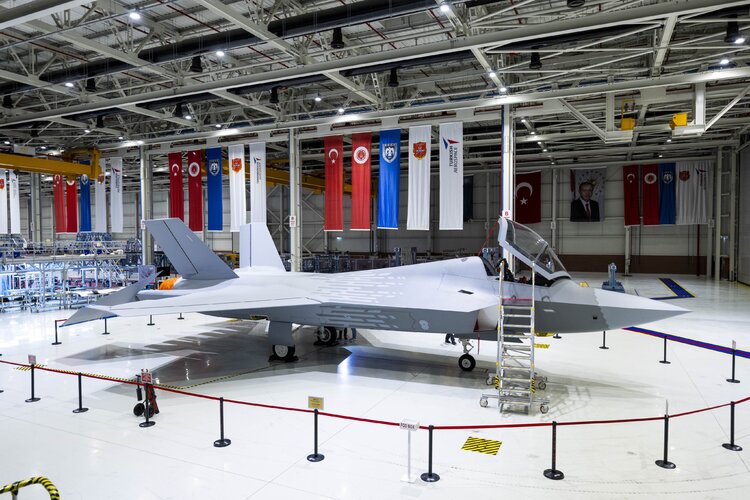
Head engineer:
-In the near future, our plan is to fly our first prototype aircraft within the year. Then we will design 7 prototypes on the way to mass production. Then there will be tests of aircraft and systems, flight and ground tests. Besides, we will have some flight test platforms. We will also perform our tests on some platforms. We plan to deliver our aircraft to our Air Force by 2028.
-You see examples of this all over the world. The first prototype we produced will be in this geometry, and the second will be in the same way. We aim to reach a solution by going step by step in the face of the problems we have seen and encountered in ground tests and flight tests. These 7 tests are already planned to support these activities on our aircraft. We have a very short calendar. A plane to be delivered to the Air Force in 2028 means a very short timetable in terms of delivery, if you look at the examples all over the world. In this calendar, we need to do a lot of prototypes and experiments. These trials do not only need to be in flight, the aircraft will also be prepared with wind tunnels, ground tests, 'Iron Bird' tests and static tests. Maybe we'll have one static test too. We will produce another one of the same aircraft and perform our tests that will statically tire and force it. Besides, maybe we will have a fatigue test. We will produce it from the same plane and subject it to fatigue tests for a certain hour. We will perform these tests by constantly loading under revolutionary loads. We will try to clear a certain flight time and plan to hand it over to our forces as such.
-There is a design team of 1500 people, and a total of nearly 3,000 people are working on the aircraft.
-We are trying to establish a master-apprentice relationship. We are enlarging our team by recruiting new journeymen and apprentices, by using our experienced friends from HÜRKUŞ, HÜRJET, GÖKBEY and ATAK as masters and new graduates as apprentices. This growth took place at a really fast pace. At the moment, we have come across a certain plateau and we are planning to produce prototypes of these aircraft within 3-5 years and take the prototypes to flight, while maintaining our team on that plateau.
-We will have a surprise about MMU on May 1st. I won't explain now, let's just say wait for our surprise.
BTW TF-X's IRST
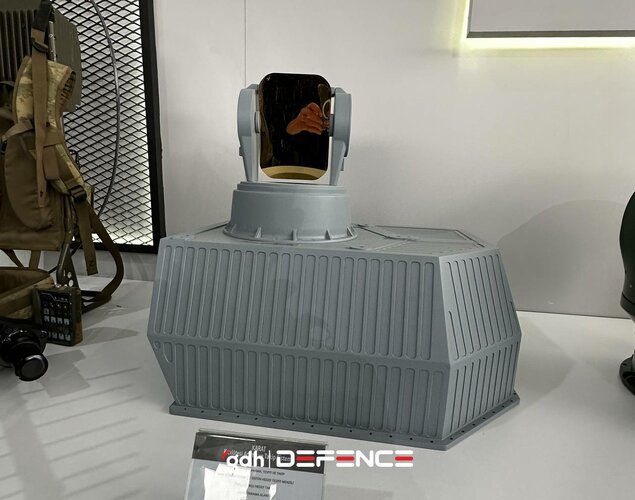
- Joined
- 29 November 2010
- Messages
- 1,703
- Reaction score
- 3,214
question, is there anything in the tail section between the engine, like a rear facing radar?
As far as I know, TAI is planning to integrate a rear facing AESA radar.question, is there anything in the tail section between the engine, like a rear facing radar?
Combat-Master
ACCESS: Top Secret
- Joined
- 15 July 2020
- Messages
- 1,104
- Reaction score
- 2,860
Was expecting IRST to be mwir, interesting they chose lwir.
LWIR is better for an IRST system. It is less sensitive to thermal noise in the environment and has better performance than MWIR in fog conditions because its waves are closer to true infrared. LWIR is also better than MWIR for imaging through smoke or aerosols. One more thing is LWIR sees negligible solar effects (sun immunity, direct exposure) while MWIR does, and LWIR provides more consistent images between daytime and nighttime. So, if you want to "detect" things further, especially in adverse weather, LWIR is the better option. Think of it like S-Band and X-Band radars. One is better suited for long-range search, while the other is better for tracking detected targets.Was expecting IRST to be mwir, interesting they chose lwir.
snne
ACCESS: Top Secret
- Joined
- 3 July 2022
- Messages
- 581
- Reaction score
- 1,555
More like EW and Countermeasures like in the case with AMCA. At least that's what I remember the CEO stating as such.As far as I know, TAI is planning to integrate a rear facing AESA radar.question, is there anything in the tail section between the engine, like a rear facing radar?
I tried to find the exact quote but it is really hard to find considering how many statements they give each week about this plane..
Here are some slides about their placement on the AMCA.
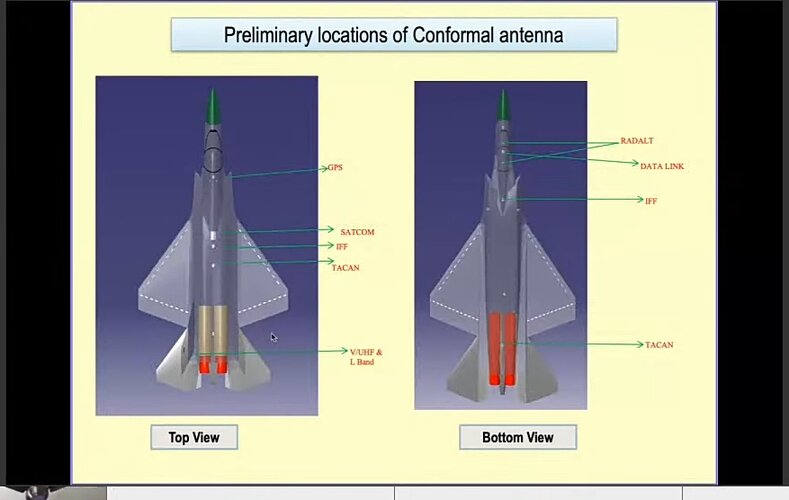
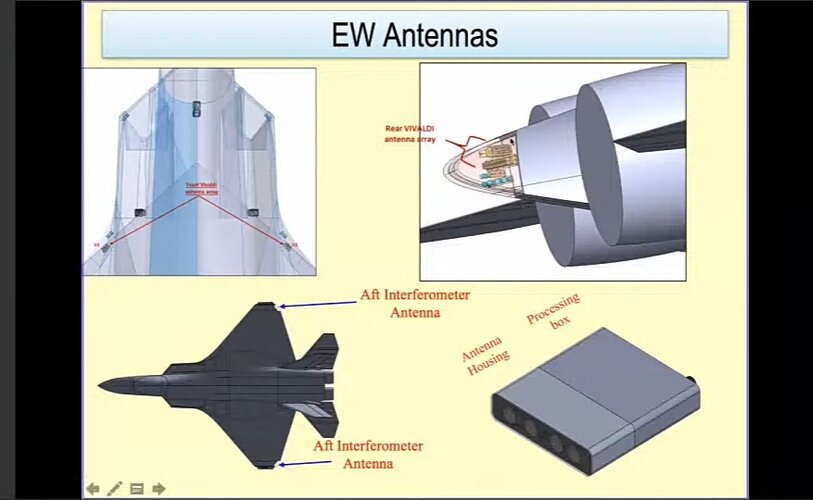
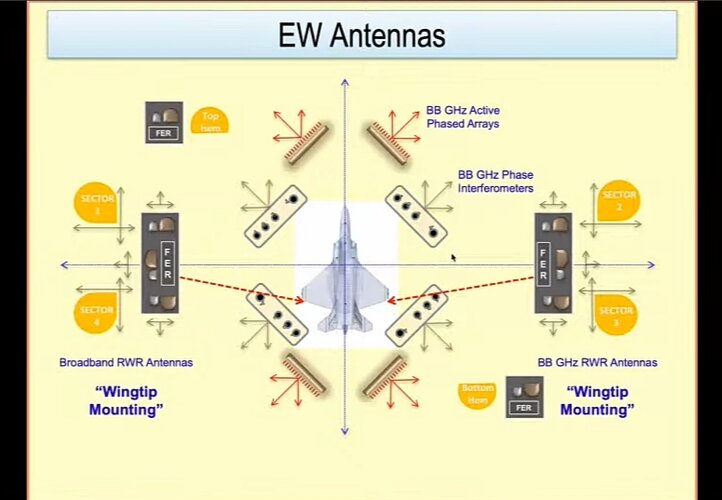
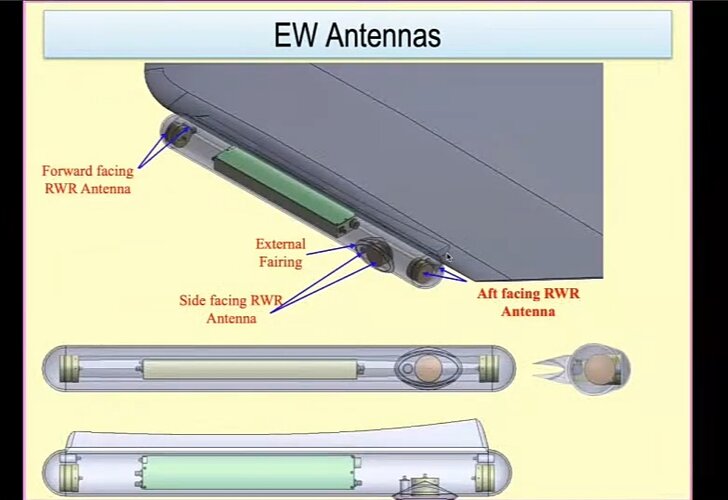
Combat-Master
ACCESS: Top Secret
- Joined
- 15 July 2020
- Messages
- 1,104
- Reaction score
- 2,860
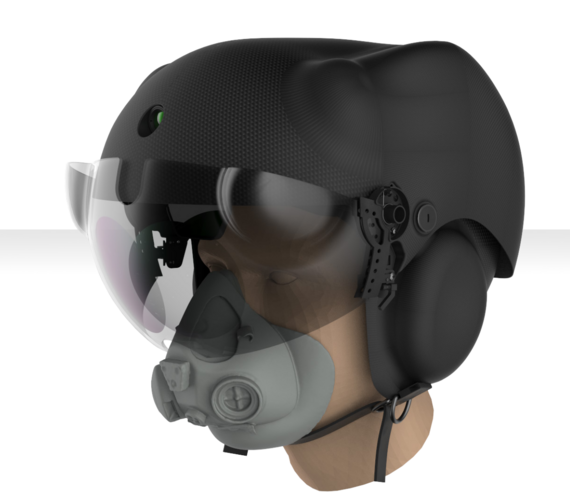
TULGAR System is a helmet-mounted display system designed by ASELSAN for fixed-wing platforms. It incorporates digital night vision, color display, and precise head tracking technologies to enhance the pilot's awareness of the aircraft's capabilities and the mission area.
System Subunits:
• Helmet Unit
• Electronic Unit
• Head Tracking Module
Thanks to its advanced optical design, the TULGAR system provides a wide field of view and high-resolution images reflected onto the visor to support pilots during the mission. The helmet unit is made of lightweight composite materials and an inner shell customized for the user to provide an ergonomic solution to pilots. Active and passive noise-canceling capabilities prevent noise from the platform and other sources from reaching the pilot.
The integrated digital night vision capability of the system enables it to be used without requiring any changes to the helmet unit during both day and night missions.
The TULGAR System is suitable for fixed-wing platforms and is ready for use in challenging environmental conditions due to its durable design.
General Specifications:
• Lightweight helmet unit
• Color display
• Interior helmet structure shaped according to pilot's head
• Digital night vision
• Hybrid head tracking system
• Active noise cancellation
• Compatibility with wearing glasses
• 3D sound compatibility
• 40°(Y)-32°(D) field of view
Interfaces:
• ARINC-818-2 Video Interface
• Display Port Digital Video I/O Interface
• Serial Interfaces (RS-232/RS-485/RS-422)
• Discrete I/O Interface
• MIL-STD-1553 Interface
Physical Specifications:
• Helmet Unit Weight: < 2.1 kg (including oxygen mask)
• Electronic Unit (EU) Weight: < 5 kg
Technical Specifications:
• Power Input: 28 VDC (Nominal)
• Power Consumption: 140 W (Nominal)/190W (Maximum)
Environmental Conditions:
• Operating Temperature (EU): -40°C/+70°C (Fan Cooled)
: -55°C/+95°C (Climate Controlled Air Cooled)
• Storage Temperature (EU): -55°C / +95°C
Qualifications:
• MIL-STD-810G W/Change 1
• MIL-STD-461G
• MIL-STD-1472G
• DO-254
• DO-178C
Combat-Master
ACCESS: Top Secret
- Joined
- 15 July 2020
- Messages
- 1,104
- Reaction score
- 2,860
3D Audio Technology is a technology that enables communication channels and voice warnings to be transmitted to stereo headphones with spatial cues in avionics intercom systems.
ASELSAN's 3D Audio Technology is based on HRTF (Human Related Transfer Function). 3D Audio is created spatially based on the location information of the warning and the head movements of the pilot. So the sound is transmitted as if it is coming from above, below, right or left.
Thanks to 3D Audio technology, the pilot's environmental awareness increases, response time and workload decrease.
Radio separation is created using 3D Audio. Communication channels are transmitted to the pilot from different angles so that the pilot can easily distinguish between channels.
3D Audio Features
• Real-Time Operation
• Radio Separation
• Directional Warning
• Global Positioning
• Reduced Response Time
• Reduced Workload
• Increased Environmental Awareness
ASELSAN's 3D Audio Technology is based on HRTF (Human Related Transfer Function). 3D Audio is created spatially based on the location information of the warning and the head movements of the pilot. So the sound is transmitted as if it is coming from above, below, right or left.
Thanks to 3D Audio technology, the pilot's environmental awareness increases, response time and workload decrease.
Radio separation is created using 3D Audio. Communication channels are transmitted to the pilot from different angles so that the pilot can easily distinguish between channels.
3D Audio Features
• Real-Time Operation
• Radio Separation
• Directional Warning
• Global Positioning
• Reduced Response Time
• Reduced Workload
• Increased Environmental Awareness
Combat-Master
ACCESS: Top Secret
- Joined
- 15 July 2020
- Messages
- 1,104
- Reaction score
- 2,860
Looks like this will be more of a light bomber project. Sure it will shoot AAMs but focus appears on range and forward signature.
They are going for a cross between air superiority fighter and multirole fighter.
paralay
ACCESS: Top Secret
Inconspicuous F-15
donnage99
ACCESS: Top Secret
- Joined
- 16 June 2008
- Messages
- 1,216
- Reaction score
- 409
which is where fighter jet is trending toward anyway. They maybe able to own that market if they can create basically larger f-35 or stealthed f-15E. I'm surprised it's not 2 seaterLooks like this will be more of a light bomber project. Sure it will shoot AAMs but focus appears on range and forward signature.
They are going for a cross between air superiority fighter and multirole fighter.
Radonislav
ACCESS: Confidential
- Joined
- 16 November 2022
- Messages
- 117
- Reaction score
- 166
There will be (or it was in the plans) a twin seaterwhich is where fighter jet is trending toward anyway. They maybe able to own that market if they can create basically larger f-35 or stealthed f-15E. I'm surprised it's not 2 seaterLooks like this will be more of a light bomber project. Sure it will shoot AAMs but focus appears on range and forward signature.
They are going for a cross between air superiority fighter and multirole fighter.
snne
ACCESS: Top Secret
- Joined
- 3 July 2022
- Messages
- 581
- Reaction score
- 1,555
There are some ambiguous statements made by the officials, that is why it is as of yet unclear. They first need to experiment enough with MUM-T to settle whether a single pilot is enough for the job. But I'd not be surprised if they view a two seater as a possible option on the roadmap.There will be (or it was in the plans) a twin seaterwhich is where fighter jet is trending toward anyway. They maybe able to own that market if they can create basically larger f-35 or stealthed f-15E. I'm surprised it's not 2 seaterLooks like this will be more of a light bomber project. Sure it will shoot AAMs but focus appears on range and forward signature.
They are going for a cross between air superiority fighter and multirole fighter.
- Joined
- 29 November 2010
- Messages
- 1,703
- Reaction score
- 3,214
Buchmaru, whom many of you posted here, and has done some really good efforts at modeling the TFX
estimates that the plane may be 19m x 13.7m
View: https://twitter.com/buchmaru/status/1652682142386909184/photo/1
estimates that the plane may be 19m x 13.7m
View: https://twitter.com/buchmaru/status/1652682142386909184/photo/1
- Joined
- 2 January 2006
- Messages
- 3,524
- Reaction score
- 3,121
Radonislav
ACCESS: Confidential
- Joined
- 16 November 2022
- Messages
- 117
- Reaction score
- 166
Combat-Master
ACCESS: Top Secret
- Joined
- 15 July 2020
- Messages
- 1,104
- Reaction score
- 2,860
Roll-out and naming ceremony.
TFX is now KAAN, Meaning “sovereign” and “ruler,” Kaan is reserved for those worthy of pulling the sword from the stone. This masculine appellation is beloved in Turkish-speaking communities and may come from Khan, an ancient Mongol and Central Asian title for a king or military ruler.
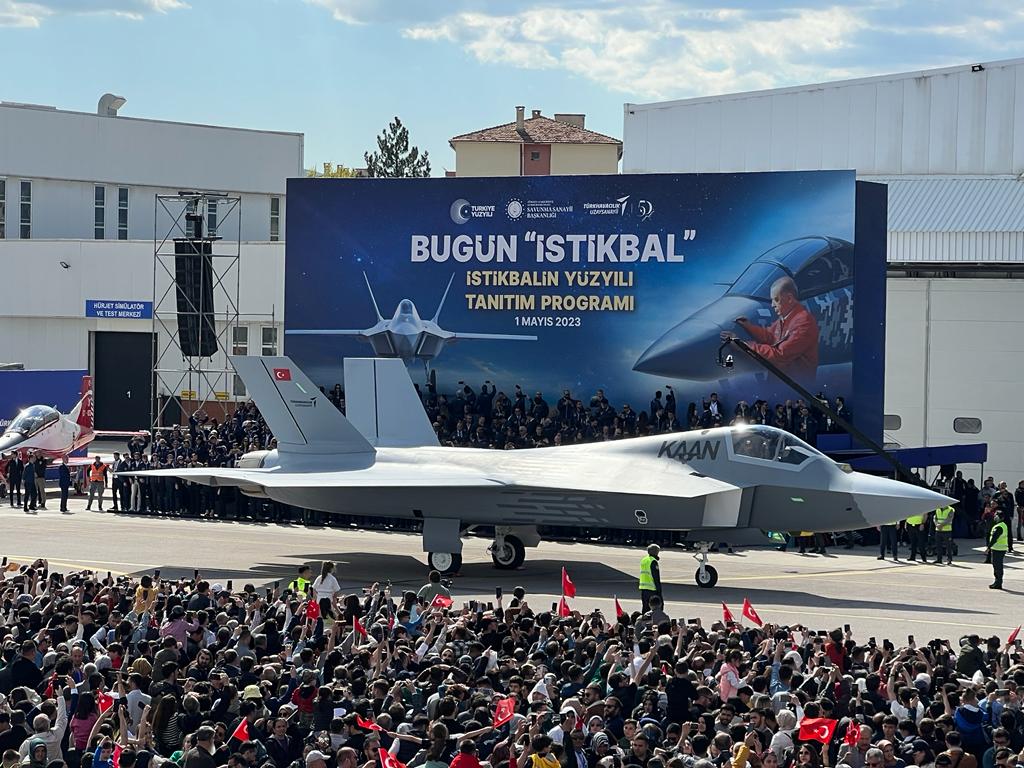
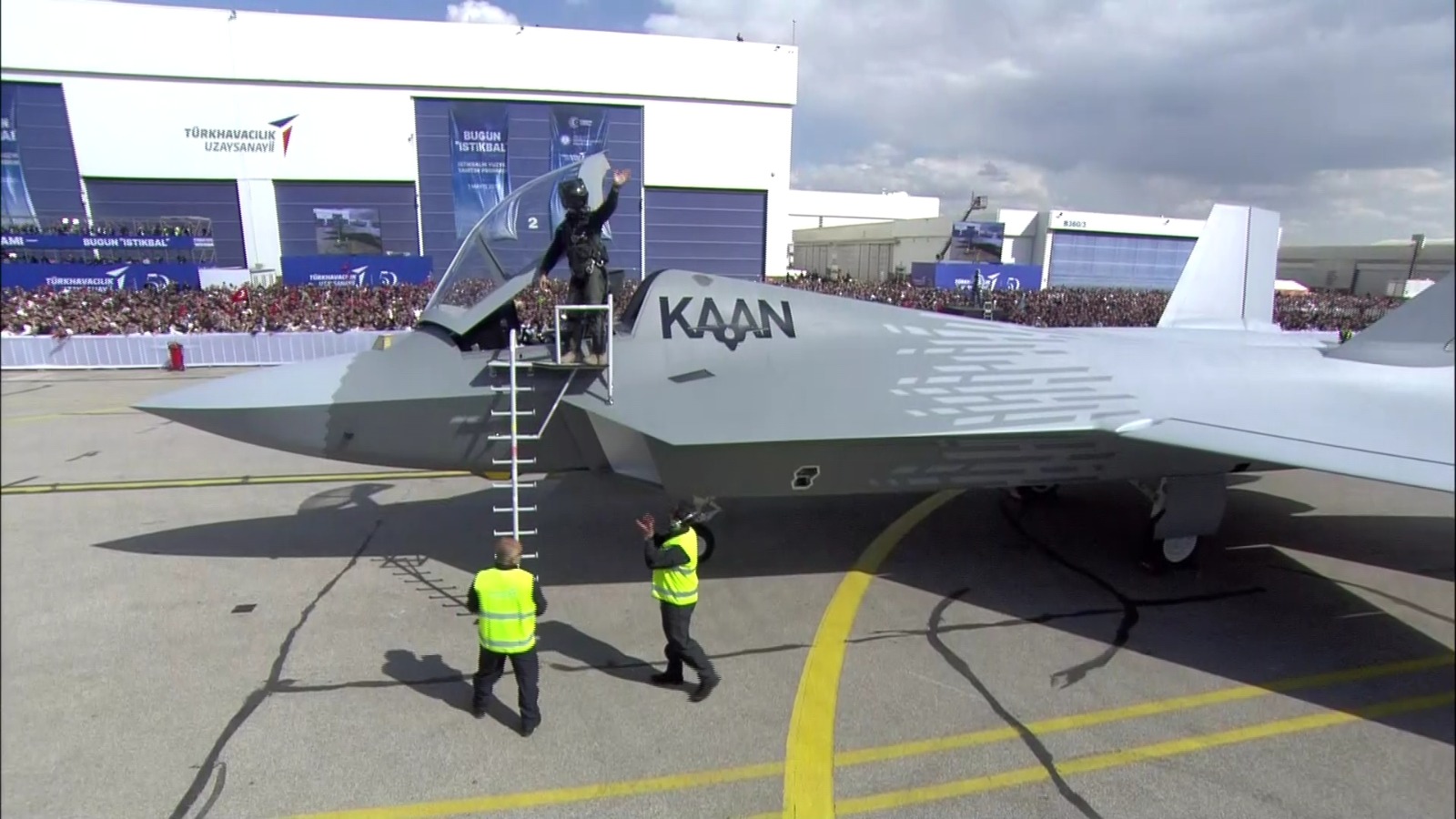
Last edited:
Combat-Master
ACCESS: Top Secret
- Joined
- 15 July 2020
- Messages
- 1,104
- Reaction score
- 2,860
Allmagor
ACCESS: Restricted
- Joined
- 20 November 2022
- Messages
- 9
- Reaction score
- 13
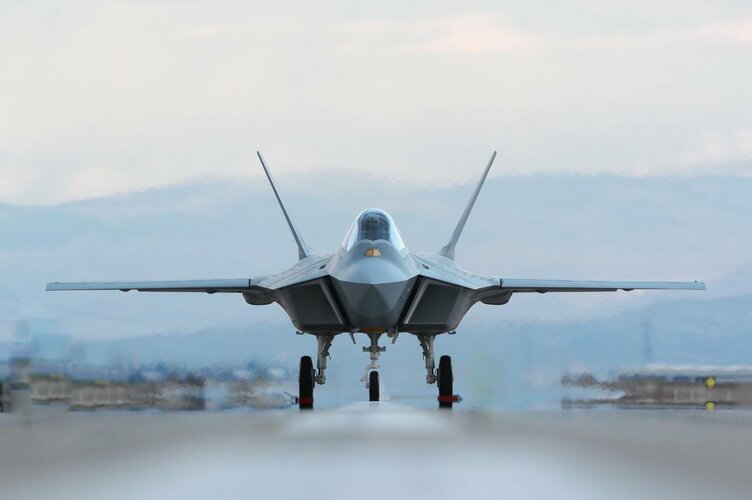
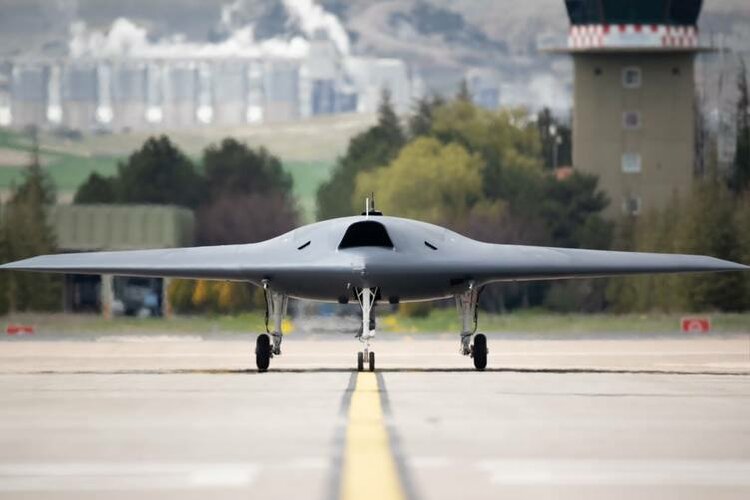
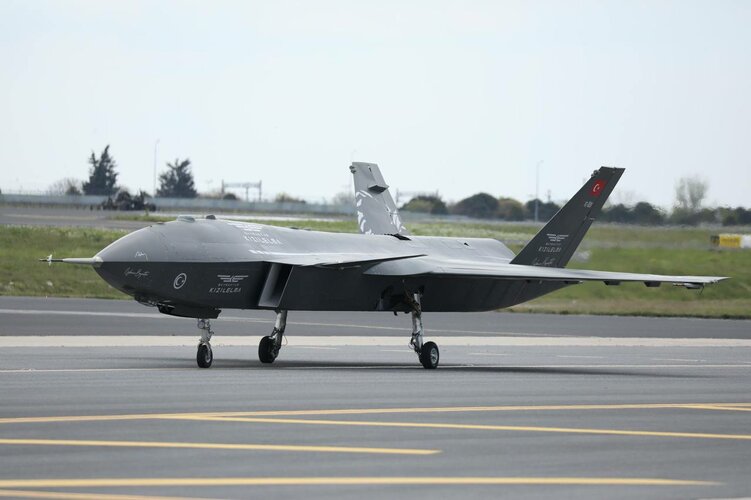
Erdogan announced the name of the fifth generation Turkish fighter MMU (TFX) ️ The fighter was named "KAAN", which means "Ruler" from the ancient Turkic. ️ Kaan (or Kagan) is a title given to rulers in the ancient Turkic states. The fifth-generation Turkish fighter KAAN will make its first flight at the end of this year. In the future, KAAN, KIZILELMA and ANKA-3 will fly autonomously.
Combat-Master
ACCESS: Top Secret
- Joined
- 15 July 2020
- Messages
- 1,104
- Reaction score
- 2,860
Aselsan just released systems they are developing for KAAN via their Twitter account;
View: https://twitter.com/aselsan/status/1653066660364840962?s=20
Electro Optic section was especially interesting,
Integrated EO System (BEOS)
View: https://twitter.com/aselsan/status/1653066660364840962?s=20
Electro Optic section was especially interesting,
Integrated EO System (BEOS)
- KARAT-100: Infrared Search and Track System
- TOYGUN-100: Integrated Electro-Optical Targeting System ASELSAN Systems
- IRIS-300: Infrared Missile Warning and Imaging System
- LIAS-300: Laser Warning System •
- YILDIRIM-300: Directed Infrared Countermeasure System
snne
ACCESS: Top Secret
- Joined
- 3 July 2022
- Messages
- 581
- Reaction score
- 1,555
New footage from the engine ignition test
View: https://twitter.com/SavunmaSanayii/status/1653061929844211715?s=20
View: https://twitter.com/SavunmaSanayii/status/1653061929844211715?s=20
- Joined
- 1 April 2006
- Messages
- 10,731
- Reaction score
- 6,774
Similar threads
-
-
Combat use of F-16s in Mideast spurs fresh demand: Lockheed
- Started by Triton
- Replies: 1
-
-
-
Turkey in missile talks with France after China SAM deal falters
- Started by Grey Havoc
- Replies: 0

